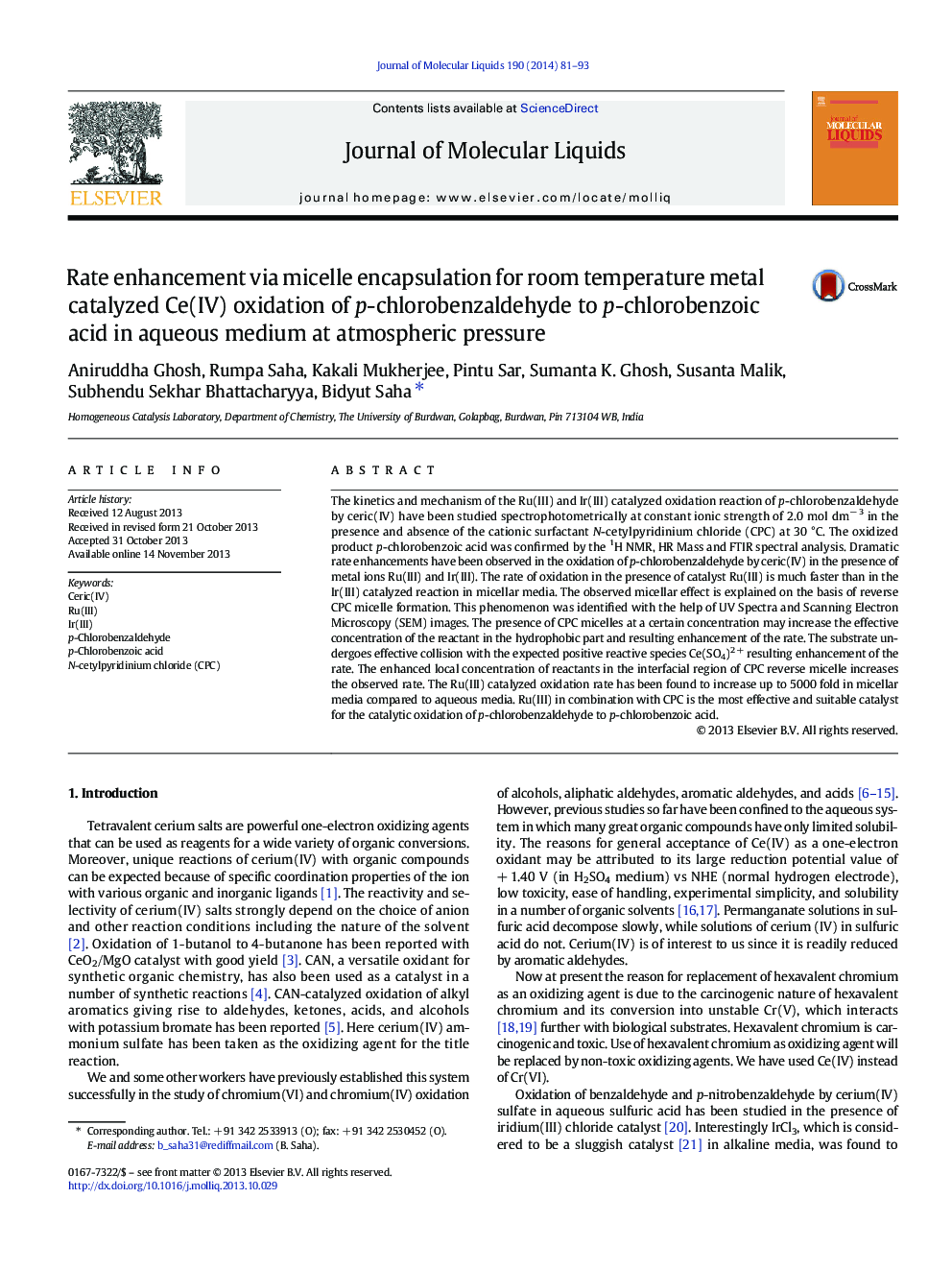| کد مقاله | کد نشریه | سال انتشار | مقاله انگلیسی | نسخه تمام متن |
|---|---|---|---|---|
| 5411684 | 1506580 | 2014 | 13 صفحه PDF | دانلود رایگان |

- Relatively non-toxic Ce(IV) has been used as oxidant in place of toxic oxidants.
- Micellar media are used to solve the solubility problem and to enhance the rate.
- Ru(III) is found as excellent metal catalyst to accelerate the oxidation reaction.
- Para-chlorobenzoic acid has been used recently as an OH radical probe compound.
- Partitioning behavior of CPC helps to identify the reactive species of cerium(IV).
The kinetics and mechanism of the Ru(III) and Ir(III) catalyzed oxidation reaction of p-chlorobenzaldehyde by ceric(IV) have been studied spectrophotometrically at constant ionic strength of 2.0 mol dmâ 3 in the presence and absence of the cationic surfactant N-cetylpyridinium chloride (CPC) at 30 °C. The oxidized product p-chlorobenzoic acid was confirmed by the 1H NMR, HR Mass and FTIR spectral analysis. Dramatic rate enhancements have been observed in the oxidation of p-chlorobenzaldehyde by ceric(IV) in the presence of metal ions Ru(III) and Ir(III). The rate of oxidation in the presence of catalyst Ru(III) is much faster than in the Ir(III) catalyzed reaction in micellar media. The observed micellar effect is explained on the basis of reverse CPC micelle formation. This phenomenon was identified with the help of UV Spectra and Scanning Electron Microscopy (SEM) images. The presence of CPC micelles at a certain concentration may increase the effective concentration of the reactant in the hydrophobic part and resulting enhancement of the rate. The substrate undergoes effective collision with the expected positive reactive species Ce(SO4)2 + resulting enhancement of the rate. The enhanced local concentration of reactants in the interfacial region of CPC reverse micelle increases the observed rate. The Ru(III) catalyzed oxidation rate has been found to increase up to 5000 fold in micellar media compared to aqueous media. Ru(III) in combination with CPC is the most effective and suitable catalyst for the catalytic oxidation of p-chlorobenzaldehyde to p-chlorobenzoic acid.
Journal: Journal of Molecular Liquids - Volume 190, February 2014, Pages 81-93